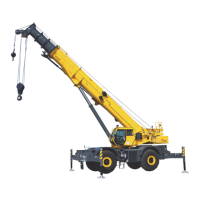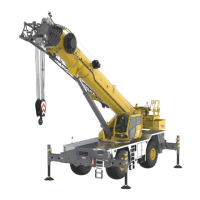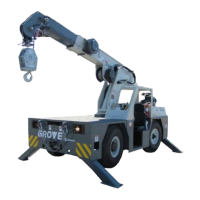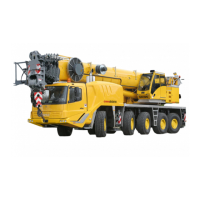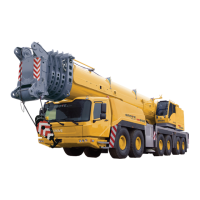UNDERCARRIAGE GRT9165 SERVICE MANUAL
8-14
Published 10-01-2020 Control # 699-00
charge valve, two hydraulic accumulators, the brake
assemblies, and all the associated hoses and tubing. The
operator depresses the pedal on the tandem brake valve,
located on the cab floor, and the valve modulates the brake
line pressure to the brake assemblies at each wheel. The full
powered brake system supplies a high brake system
pressure with relatively low reactive pedal forces, while
controlling the maximum brake line pressure. The service
brake dual accumulator charge valve regulates flow to the
hydraulic accumulators to provide fully powered
independently separate, primary (front) and secondary
(rear), service brake circuits. Hydraulic pressure is
constantly maintained in the brake circuits by the
accumulators and the charging valve. The brake assemblies
are disc type brakes.
Parking Brake
The parking brake is a hydraulically-controlled, disc-type
brake, located on the front axle. It is spring applied and
hydraulically released. The system consists of a two-position
switch, a three-way solenoid valve, actuator, brake
assembly, and all the associated hardware and tubing. The
selector switch, located on the steering column in the cab, is
used to activate the solenoid valve which controls the park
brake actuator, which applies and releases the park brake.
NOTE: For Description and Maintenance of the tandem
brake valve with treadle pedal, the accumulators,
and the dual accumulator charge valve, refer to
Valves, page 2-21.
Maintenance
Troubleshooting
Table 8-3
Symptom Probable Cause Solution
1. Brakes are insufficient. a. Lining thickness less than
0.125 in (3 mm).
a. Replace lining.
b. Restriction or leaks in lines. b. Check all lines for leaks and
restrictions.
c. Low hydraulic oil flow. c. Check the hydraulic oil level in
reservoir and check flow from
the tandem brake valve.
d. Air in brake lines. d. Bleed the brakes.
e. Brake pads/linings are
grease-soaked.
e. Replace pads/linings.
f. Engine not running. f. Start engine. Due to the
operation, the engine must be
running to provide full brake
power.
g. Brake relief valve stuck open. g. Replace the relief valve.
h. Dual accumulator charge
valve not charging
h. Check valve operation and
repair or replace valve.
i. Accumulators not pre-
charged.
i. Check accumulator pre-
charge.
2. Hard brake pedal with engine
running.
a. Pedal travel obstructed. a. Check pedal and ensure it is
unobstructed and moves
properly.
3. Brakes lock up. a. Too much hydraulic pressure. a. Check the flow from the flow
divider.
b. Brake pedal push rod
improperly adjusted, causing
brakes to be always applied.
b. Adjust the push rod linkage so
the brake pedal and push rod
fully return.
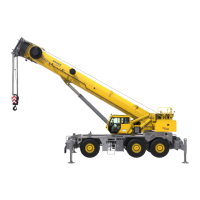
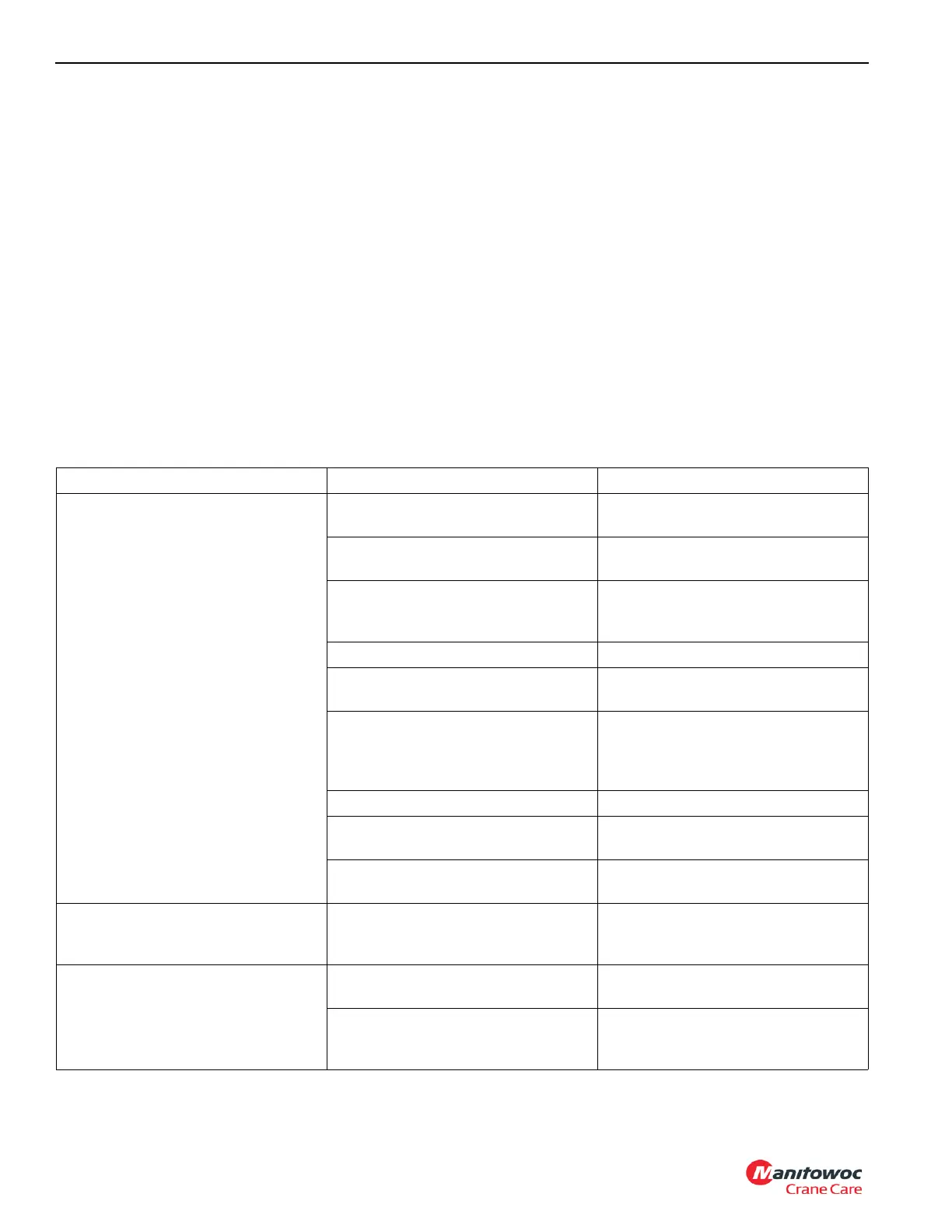